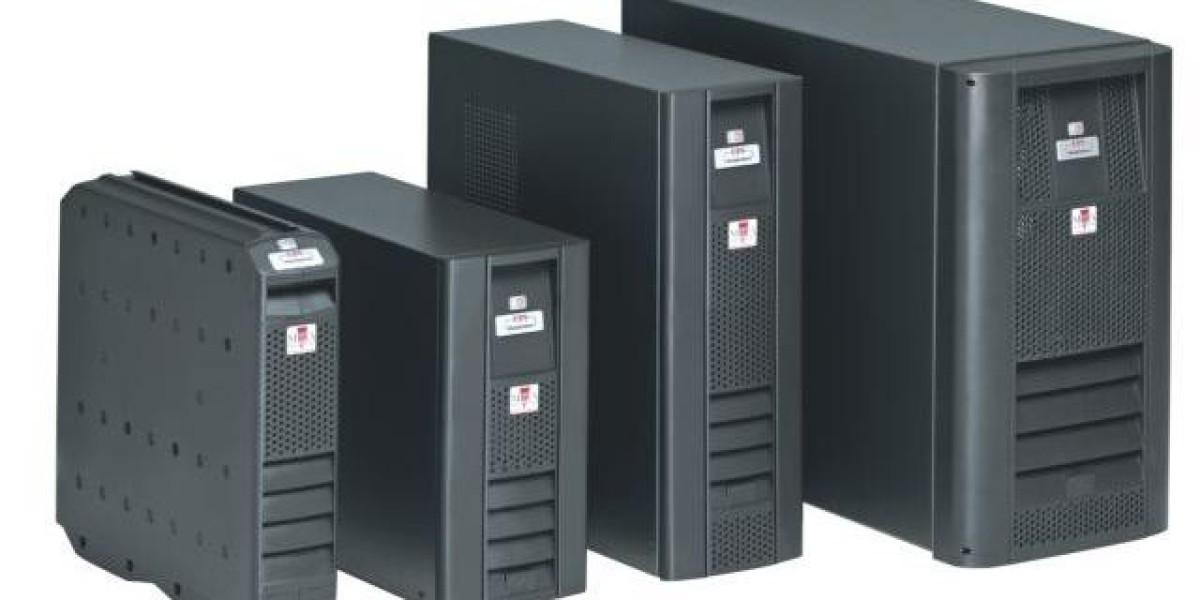What is an Uninterruptible Power Supply?
An uninterruptible power supply, commonly referred to as a UPS, is a backup power system that operates continuously to provide power to connected electrical equipment during a power outage or disruption. A UPS differs from a standard backup generator in that it can instantaneously provide power during a blackout without any delay.
How Does a UPS Work?
A Uninterruptible Power Supply contains a rechargeable battery, such as a lead–acid battery, that engages to provide power automatically in the event of an outage. When connected to utility power, the battery in a UPS charges to full capacity. Then, if there is an outage or fluctuation in power, the UPS switches its output to draw instant power from the battery without any interruption. Most UPS also incorporate surge protection equipment to guard connected devices from power surges, spikes, and other disturbances.
Components of a UPS
The main components of any UPS include:
- Batteries: As mentioned, lead–acid batteries are commonly used, but newer models may also use lithium-ion batteries that provide longer run times.
- Charger: Charges and maintains the connected batteries when utility power is present.
- Inverter: An electronic device that converts DC power stored in the batteries to AC power to run connected equipment seamlessly.
- Software: Monitoring software tracks the UPS system status, manages alerts and notifications, and provides data about power events and battery capacity.
- Monitoring interface: Web interface, LCD screen or other means to view system information and settings.
- Input/output ports: Connectors to plug equipment into the UPS and connect it to mains power.
Types of UPS Systems
UPS systems are broadly classified based on their design and battery technology into online and standby/offline types:
- Online UPS: Considered "double conversion" as they continuously convert utility power to regulated DC via the batteries, then convert it back to AC output power supplied to equipment. This provides complete isolation and protection, but uses more energy.
- Standby UPS: Also known as "off-line", these engage only during outages and transfer over in milliseconds. More efficient than online but provide less isolation. Often preferred for cost reasons.
- Line-interactive UPS: A hybrid between online and standby types that performs some conditioning of incoming utility power. Faster switching than standby but not as robust as online models.
Applications of UPS Systems
Some common applications where UPS systems are used include:
- Data centers: To provide runtime for servers, storage arrays, networking gear during outages. Larger multi-module systems here can run for 30 mins or more.
- Medical equipment: Critical systems in hospitals and healthcare facilities rely on UPS to keep lifesaving devices operational.
- Commercial facilities: Security systems, access control, HVAC and other building infrastructure need continuous power.
- Industrial control systems: PLCs, HMIs, variable speed drives used in manufacturing require uninterrupted power.
- Telecom networks: Telephone switches and cellular towers depend on UPS to keep networks online.
- Office equipment: Desktops, printers and other office electronics are protected from disturbances by UPS units.
- Home/Small business: Modest UPS protects home office equipment, routers, WiFi systems, and other systems.
UPS Selection Factors
When selecting a UPS system, factors to consider include:
- Power needs - Total load wattage of equipment needs to be below UPS rated capacity.
-Backup run time needed - Larger batteries provide longer autonomy to gracefully shutdown equipment.
-Type of load - Online UPS better suits fluctuating loads while standby suits steady loads.
-Form factor - Rackmount, tower or smaller desktop models available based on space.
-Additional features - Management software, notifications, surge protection, maintenance bypass.
-Environmental conditions - Operating temperatures and other site factors affect reliability.
-Total cost of ownership - UPS purchase price along with replacement batteries and service costs.
With proper sizing, installation and preventive maintenance, an uninterruptible power supply delivers mission-critical systems the clean continuous power they need to function reliably in any conditions or emergency situations. By safeguarding equipment from disturbances on the grid, UPS units have become indispensable for virtually any application requiring highly available power.
Get more insights on Power Supply Systems



